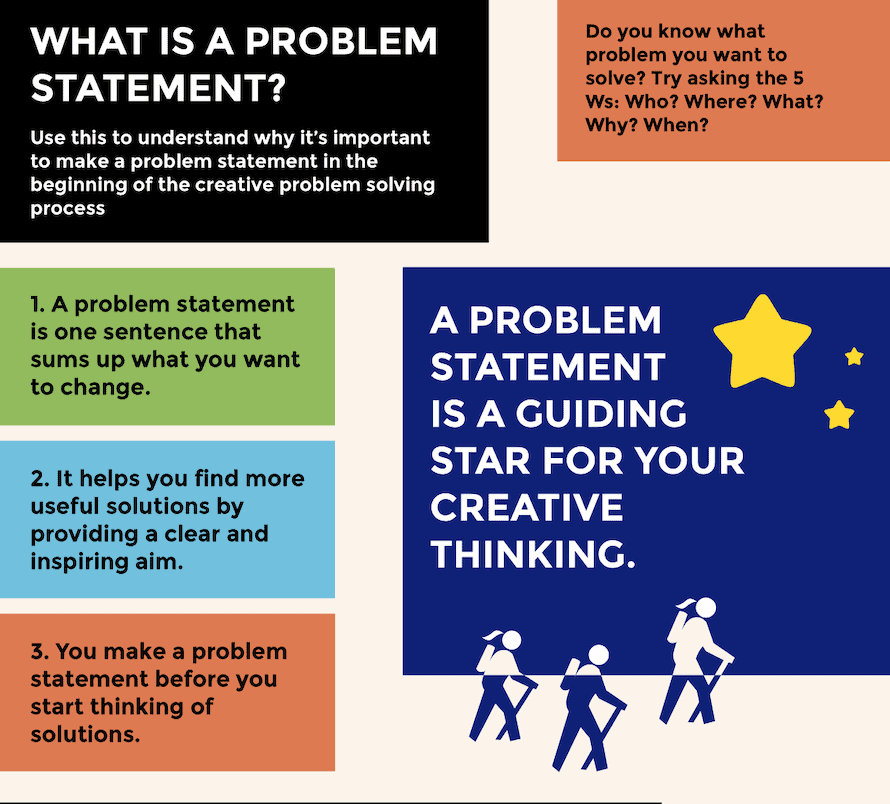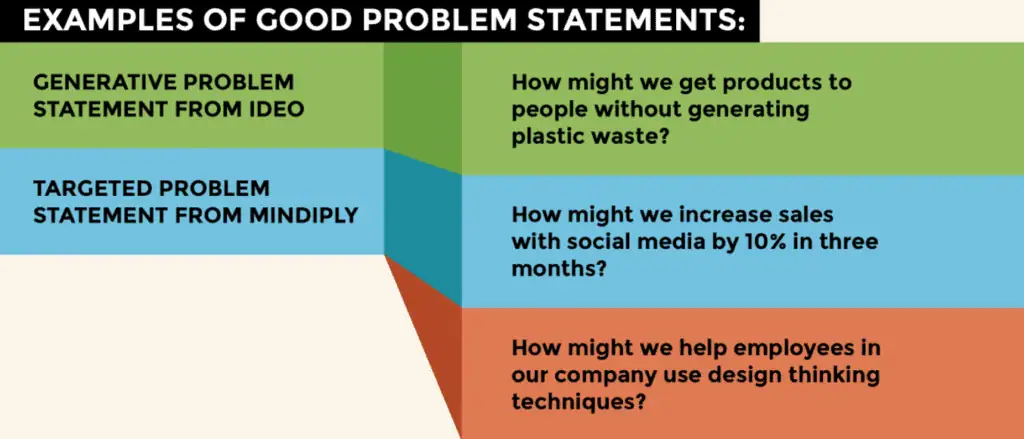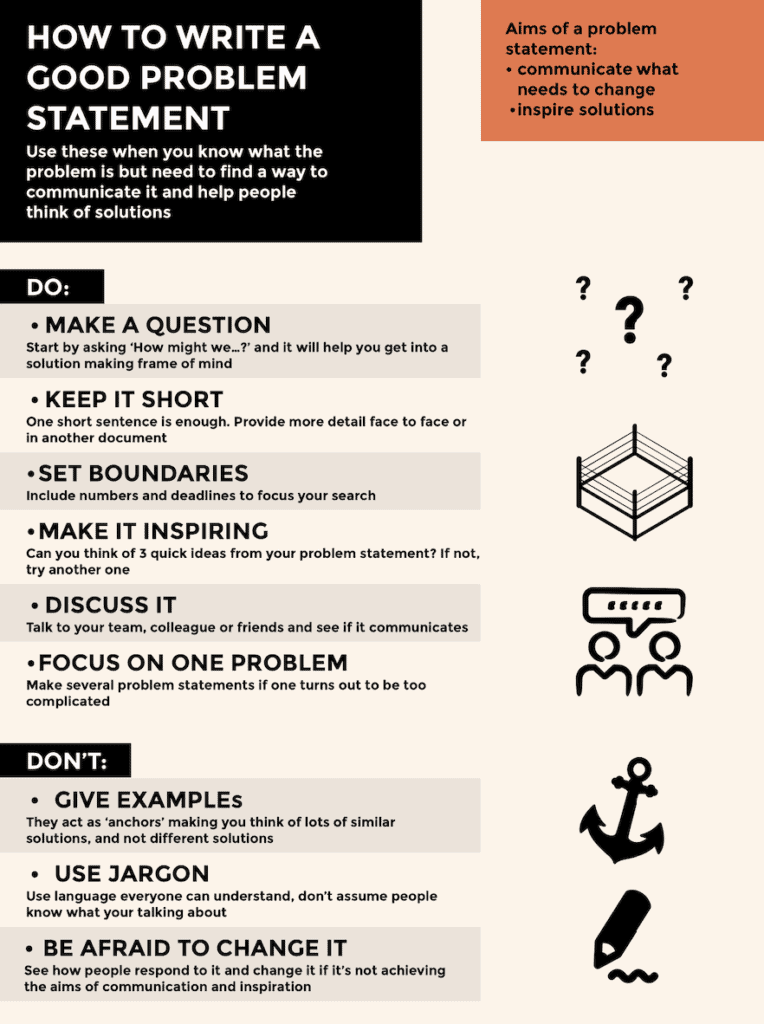Last updated on 4 April 2022.
This article will give you an insight into what are problem statements for businesses, problem statement examples, how to write a problem statement and many more questions that entrepreneurs have regarding problem statements.
What is a Problem Statement?
Before discussing problem statement examples, just a quick brief introduction to what is a problem statement in a business? A problem statement defines the problem faced by a business and also identifies what the solution would look like. Businesses are usually created on the basis of solving problems that exist amongst consumers.

A problem statement can be seen as the starting point for coming up with a product vision. In defining the problem statement for your startup or business, be sure to include these elements:
1. The Problem: What is the problem plaguing the organization?
2. Who It Affects: Indicate the entities that are affected by the problem. This can be a group of stakeholders or an organization.
3. Impact: What is the impact or consequence of the problem?
4. Solution: Include your recommendation for solving the problem.
When Should You Write A Problem Statement?
A problem statement should be written in businesses and other organisations, writing a problem statement is an important step in improvement projects. A clearly defined and well-understood problem is crucial to finding and implementing effective business solutions. In this case, the problem statement is usually a stand-alone document.
Writing a problem statement should help in careful decision-making for the existence of your business, and the reasons for its operation. The problem statement will serve as the basis for the introductory section, directing the reader’s attention to the issues that your proposed business plan will address. A problem statement is a communication tool.
Problem statements are important to businesses, individuals and other entities to develop projects focused on improvement. Whether the problem is pertaining to badly-needed road work or the logistics for an island construction project; a clear, concise problem statement is typically used by a project’s team to help define and understand the problem and develop possible solutions.
These statements also provide important information that is crucial in decision-making in relation to these projects or processes. A problem statement can be identified by noticing the following measure in all problem statement examples:
- It should neither be a statement of the Vision and Mission of the company nor any philosophy.
- A problem statement should be brief and clear.
- A problem statement should be specific and measurable.
- The context must always be made clear.
Problem Statement Examples
There are some examples of problem statements. Let’s use the example of Netflix, who initially solved the problem people had while having to travel to the video store to rent a movie.
Netflix sought to avoid video stores altogether and instead deliver movies in an envelope to your mailbox, allowing you to keep the movie as long as you’d like. Netflix’s problem statement would probably look something like this:
“Going to the video store is a pain. People don’t like travelling back and forth just to rent a movie and they hate paying late fees even more.”
A simple interpretation of problem statement examples (taking Netflix in the example) will be portrayed as the following as well:
Problem: “Going to the video store requires fighting traffic, wandering the aisles, and waiting in long lines just to get a single movie.”
Solution: “Netflix allows anyone to enjoy thousands of titles streamed directly to their home or delivered to their mailbox.”
In just two sentences you have given a potential investor an easy-to-digest problem/solution statement. Problem statement examples like that of Netflix are simple yet straight to the point.
Good problem statement examples focus entirely on the problem so that the audience can build a powerful case for that problem and accept the solution that the business is trying to provide.

Problem statement examples also include Facebook for instance. Harvard had a Facebook of their own when Mark Zuckerberg was studying there. His frustration was that “he could only search and look at people’s information on the university’s Facebook and not perform any sort of social interactions (liking, commenting etc.)”. His objective was to create a platform where members can search for people according to their interests and can create an online network of friends/study groups.
Elements of a Good Problem Statement
There are certain components and elements of a good problem statement. All great problem statement examples are comprised of the following components. There are four key elements you should include when writing a problem statement:
- Ideal situation: The first thing your problem statement should describe is what the ideal situation would be if there wasn’t a problem you needed to address. This section identifies the goals and scope of the project are. This section should create a clear understanding of what the ideal environment will be once the issue has been resolved and what your business has done in order to be able to solve the problem that exists.
- Reality: The next section of your problem statement should describe what the current reality is for your company or organization. This section will identify what the problem is, state why it is a problem and identify who the problem is impacting. It will also describe when and where the problem was identified. This section is basically doing a scenario analysis.
- Consequences: This section of your problem statement should identify what the consequences of the problem are. This section describes the effects of the problem by describing how the people affected by the problem are being impacted and quantifying how much the problem is impacting them. Common consequences can include the loss of time, money, resources, competitive advantage, productivity and efficiency.
- Proposal: The proposal section of a problem statement may contain several possible solutions to the problem, but it is important to remember that it does not need to identify a specific solution. The purpose of the proposal section should be to guide the business team on how they can research, investigate and resolve the problem.
How To Write A Problem Statement
Apart from these tips, check out our article for detail on how to write a problem statement for your business with more problem statement examples.
- Describe the ideal situation you aim to achieve. To begin, you’ll want to provide some context that will make it easier to understand the problem. Start by explaining how this particular process should work. Concisely describe how the process would function if the current problem didn’t exist before mentioning the problem, keeping the end-user in mind.
For example, most problem statement examples say that you have an idea of how to increase efficiency in a process to maximize the best use of resources. You might begin by describing a theoretical situation in which the system is more efficient and working toward your proposal from there, always keeping in mind who, what, when, where and why to keep yourself on track.
- Pick the biggest problem to solve. There’s a good chance that your product/service solves multiple problems. While defining your problem statement, however, it’s time to lead with just one of them – the biggest problem you solve.
While pitching your problem statement to investors, do note that they will not have time to remember all of the problem statement examples that are put in front of them, but are likely to remember the one that is able to solve their problem.
- Consider the audience’s needs in your problem. Like all problem statement examples, review reports and talk to staff members to ensure that you truly understand the scope of the problem.
Consider the needs and experiences of your audience when you write the statement. As a business, individuals will be drawn to you and your problem statement examples when they are able to relate to it or have experienced something similar. The vision for your product/service should be no different. The more your audience can relate to your story, the better they will understand it and want to connect to it.
- Provide facts about the problem that your business is solving. Most problem statement examples out there are supported by surveys or statistics. Depending on the problem, your problem statement might include references to internal or external reports, staffing reports, statistics, customer demographics, national trends and information on company resources if they contribute to the problem. Avoid adding any excess numbers, but make sure to include only key statistics that illustrate the severity of the problem.
- Explain the benefits of your proposed solution. You’ve described an ideal scenario in which the problem doesn’t exist through problem statement examples. You’ve pointed out the problem, explained the ramifications of choosing not to fix it (using dollars and solid data) and proposed some realistic approaches to finding a solution.
- Now is a very good time to demonstrate why this solution will work, again focusing on efficiency and the financial impact of your solution. Address what expenses the solution will decrease, how this solution will free up revenue streams and what intangible benefits, such as increased customer satisfaction, your solution will bring.
Purpose Of A Problem Statement
One is to identify and explain the problem in a concise but detailed way to give the reader a comprehensive view of what’s going on. This includes identifying who the problem impacts, what the impacts are, where the problem occurs and why and when it needs to be fixed.
Another purpose of the problem statement is to clarify what the expected outcomes are. Establishing what the desired situation would look like helps provide an overarching idea about the project. The proposed solution and scope and goals of the solution are made clear through this statement.
The problem statement provides a guide for navigating the business once it begins. It is continually referenced throughout the duration of the business to help the team remain focused and on track. Near the full establishment of the business, this statement is again referred to in order to verify that the solution has been implemented as stated and that it does indeed solve the initial problem.
This can help in making sure that proper steps are being taken to prevent the same problem from happening again in the future and to provide room for continuous improvement within the business through innovation. It serves as a guide and a checklist to ensure that all objectives of the business are being met.
On A Final Note
To conclude this article, all the good problem statement examples have a list of do’s and don’t’s that businesses consider.

A problem statement describes the problem faced by an organisation and also identifies what the solution would look like. It can also establish a foundation for building compelling business cases and proving the necessity for specific projects. Before your business advertises a solution, make sure the customers are aware of the problem that you are solving, which is conveyed through your problem statement.